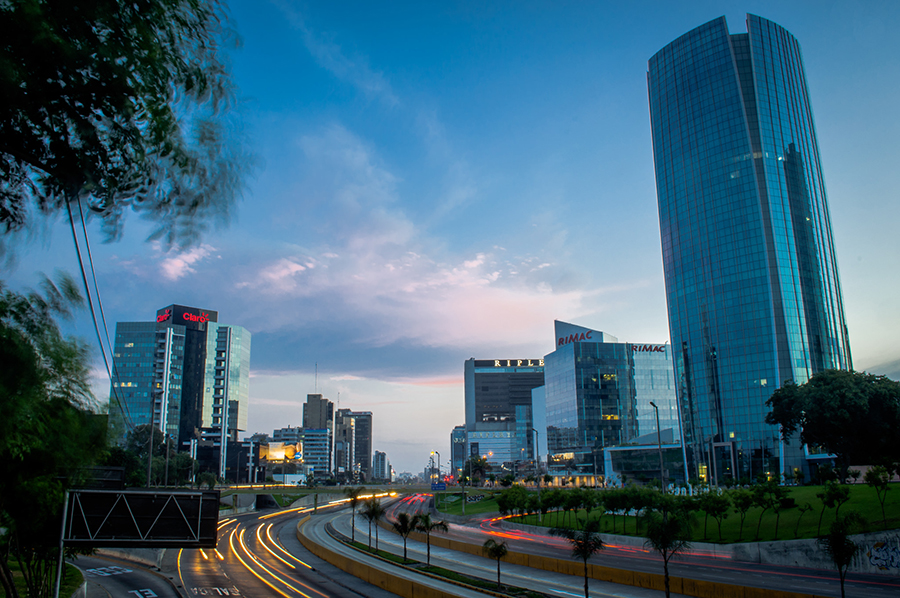
Good article by Miguel Córdova Ramírez on the teaching of architecture.

Good article by Miguel Córdova Ramírez on the teaching of architecture.
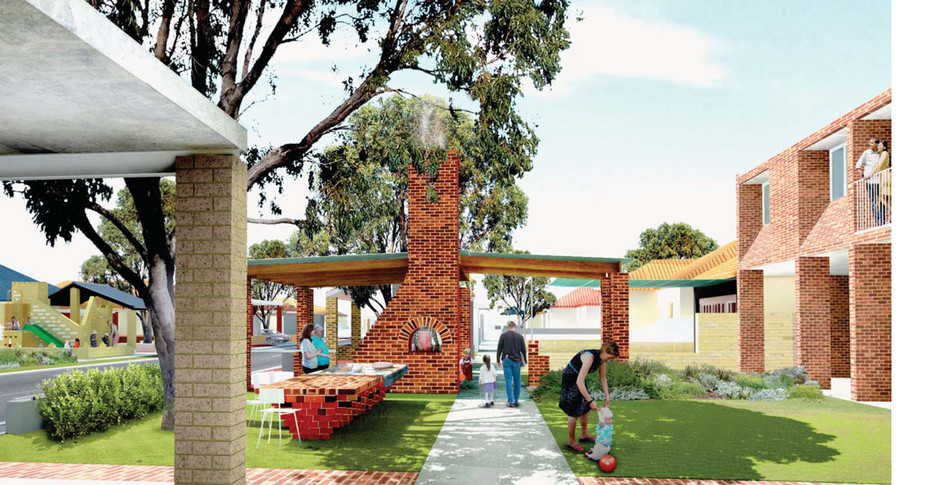 Grace Mortlock, University of Technology Sydney and David Neustein, University of Technology Sydney; republish from The Conversation
Grace Mortlock, University of Technology Sydney and David Neustein, University of Technology Sydney; republish from The Conversation
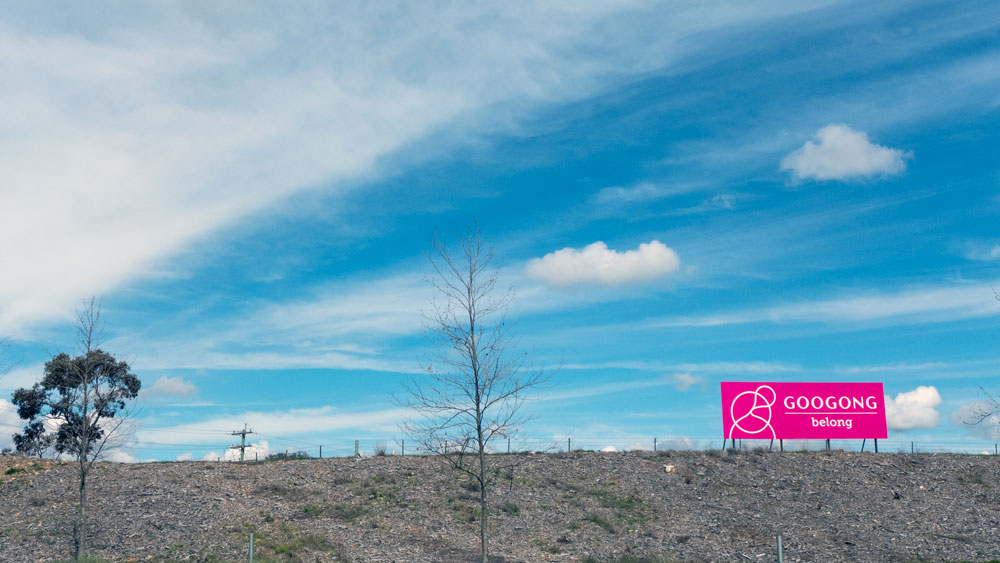
With the debate in Canberra about housing affordability, the ACT Liberals have been using a particular line in their election statements to criticise the current government’s Land Development Agency (LDA) and its handling of land prices.

In Australia the government has completely messed up any opportunity to gain long-term economic sustainability for the country. We have just witnessed the current government do a dirty deal with another party led by a mining millionaire to do away with an opportunity for a just tax on the miners.
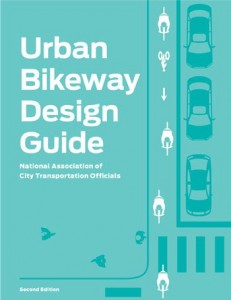 The Urban Bikeway Design Guide, Second Edition, is based on the experience of the best cycling cities in the world. Completely re-designed with an accessible, four-color layout, this second edition continues to build upon the fast-changing state of the practice at the local level. The designs in this book were developed by cities for cities, since unique urban streets require innovative solutions.
The Urban Bikeway Design Guide, Second Edition, is based on the experience of the best cycling cities in the world. Completely re-designed with an accessible, four-color layout, this second edition continues to build upon the fast-changing state of the practice at the local level. The designs in this book were developed by cities for cities, since unique urban streets require innovative solutions.
To create the Guide, the authors conducted an extensive worldwide literature search from design guidelines and real-life experience.
It was announced in the UK that the winner of a competition has proposed that to deal with population growth that new cities should be built nearby established ones. These would be garden cities connected back to the older city by public transport.
From The Guardian: London – with all its tarmac, brick and glass – is actually 38.4% open space and ranks as the world’s third greenest major city. Now Daniel Raven-Ellison wants to go further … and make Greater London a national park. His campaign and online petition aims to have the city treated in the same way as parks like the Peak District and the Brecon Beacons, to conserve its natural beauty, wildlife and cultural heritage.
——————————–
Paul Costigan, 20 August
LA wasn’t always a driver’s town. In the 1920s, it had the longest urban rail network in the world, and innovative infrastructure was built for cyclists as well. Despite this, Angelenos fell in love with the car early on and moved for more highway projects, making it the road-based city it is today.
——————————
Paul Costigan, 19 August 2014
 There is a very hard-hitting article in the August 2014 issue of The Monthly on how the two large supermarkets have been allowed to rip anyone and everyone off. Even more depressing is that it points to how we, as consumers, are continuing to allow this to happen.
There is a very hard-hitting article in the August 2014 issue of The Monthly on how the two large supermarkets have been allowed to rip anyone and everyone off. Even more depressing is that it points to how we, as consumers, are continuing to allow this to happen.
The major point raised by the article is how this dominance of the two of these supermarkets has reduced the food security in this country.
I have said it before and am happy to say so again, I live in a suburb in Canberra that has a fabulous amount of trees. The amount of trees in the public arena, streets and parks etc, combined with those throughout the residential properties delivers an ambience that is hard to explain to anyone who has not experienced it. With our local trees comes other biodiversity and heaps of bird life. Researchers have just worked this out. Click here for a story on this.
I spotted this YouTube introduction to the Far East Organization Children’s Garden at Gardens by the Bay in Singapore.
I have the benefit of living in a suburb with plenty of tree cover. In fact the view outside onto the streets is almost as if the street is a parkland. The concept that any suburb should have an abundance of trees and shrubs and associated bio-diversity is simply so logical that one wonders why would anyone think otherwise.
The Sustainable Sites Initiative (SITES™) is a program based on the understanding that land is a crucial component of the built environment and can be planned, designed, developed, and maintained to protect and enhance the benefits we derive from healthy functioning landscapes. Sustainable landscapes create ecologically resilient communities better able to withstand and recover from episodic floods, droughts, wildfires, and other catastrophic events. They benefit the environment, property owners, and local and regional communities and economies.
 A report on that the wake up call may at last have been heard by some of the energy suppliers.
A report on that the wake up call may at last have been heard by some of the energy suppliers.
As the reality hits home, some energy companies are realising that coal based energy may not be as a sustainable business model as the proposed by Australia’s foolish Prime Minister.
Dealing with contemporary planning agencies has become a very stressful task for any person with concerns for their immediate and future urban environments.
Always good to check if any Australian City Councils are taking actions and setting targets despite the dangerous attitude of our Federal Governments.
Melbourne City Council has an Urban Forest Strategy to increase markedly its tree coverage across the city (remembering this is the inner city council – who knows what the rest are doing!).
There is no doubt that the City of Sydney and its harbour are magnificent to behold. (click on the photo to enlarge). The mix of built structures really makes for a view that demands you take the time to stare, contemplate and to just enjoy it for as long as it takes. However…..
In recent weeks and months there have been several significant development proposals announced by the territory (ACT) government in Canberra. If all the government’s ambitions come to fruition then residents about to witness some very serious alterations and additions to the make-up of several parts of the inner city urban fabric.
Consumer and climate experts say extreme weather could raise insurance premiums and lower property values. This is something still being ignored as too many people have allowed the federal government misinformation campaigns to distract them from addressing these devastating issues. click here
—————————
Paul Costigan 5 June 2014
from The Guardian, Designing cities and factories with urban agriculture in mind. The Netherlands offers inspiration for designers looking to create environments that harvest water, energy and nutrients.
Urban farms are transforming inner city spaces – rooftops, infrastructure, streetscapes, building skin – into generative ecologies that support the lives of people, and pollinators too. They are bringing into cities, and into plain view, the natural systems that sustain urban life
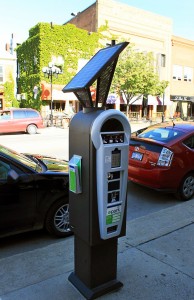 There are all sorts of stories in circulation in Canberra as a result of the decision to introduce paid parking for all areas within the Parliamentary Triangle. This has a big impact on those who work in the area. Some public servants are devising clever tricks to continue to have free parking.
There are all sorts of stories in circulation in Canberra as a result of the decision to introduce paid parking for all areas within the Parliamentary Triangle. This has a big impact on those who work in the area. Some public servants are devising clever tricks to continue to have free parking.
This will also mean that visitors will now have to pay to visit the national institutions and have limited time to visit. This could be a marked change in how visitors regard the national cultural institutions. I know as a local, it will mean less visits to these institutions.
The same crowd that managed to assist in bringing down the Rudd Labor government when the government proposed a tax on the riches being ripped out of the country, have just introduced an online promotion to bring together those in favour of Big Coal and its future.
Sadly for Big Coal have entered the democratic world of online chats and twitter. The full story is told in the Guardian – click here. Enjoy and chuckle at the expense of the not so bright chiefs of Big Coal.
There’s evidence appearing about the take up of solar may in fact continue to expand and become fully part of the country’s source of electricity. This is amazing given the on-going vicious and well-funded campaigns being carried by Big Coal and their allies in the present Australian Government.
The next big trick is to get solar to be a key issue at the coming elections, both state and federal. With many of the subsidies now being removed, those who have solar are starting to notice how they are being duded by the Big Coal electricity companies who do not want solar to succeed.
There’s a very good article online titled: Rooftop solar may be ‘sleeping giant’ of Australian politics – click here. It is worth a read to gain an update on this debate and some facts on the current rip offs underway.
———————————
Paul Costigan 14 April 2014
A piece from the New Yorker that again points out that the time for action on climate change is now but that inaction has actually become the norm. So many politicians have come to office on the back of statements on climate change, yet here we are in 2014 with no significant actions being undertaken to realistically deal with climate change.
The really sad part is, as pointed out in the article, the longer we allow our national governments to sit on their hands, then the harder it will be in the coming years as the problems will have worsened and become far more difficult to deal with. It seems we are all waiting for someone else to solve this problem.
Eventually of course, someone or at least something will. That will be the planet that rejects the dangerous race called humans.
Here’s the link to the New Yorker article – click here
From the Independent Australia Blog comes the warning about food security.
The latest report from the United Nations Intergovernmental Panel on Climate Change paints a grim picture for the future of Australia’s food security.
Food security is an issue that must be carefully and comprehensively addressed by our government as a matter of critical forward planning. And it must be given priority over trade “arrangements” that may have attractions now, but which will limit the government’s policy options when current circumstances change, which all indicators point to being soon.
In a blog on the Huffington Post, the authors point out the obvious. That is, obvious to those who are looking and care as opposed to too many who are presently making decisions about cities and sustainability.
The evidence is there. Design well and all the benefits can follow. Design badly, which is too common, and all the inequities and unsustainable practices come to the fore. As the authors say:
Well-designed cities generate jobs, innovation, and economic growth for all. But when designed poorly — with too much sprawl, waste, and inefficiency — they can divide cities and exacerbate pollution, inequality, and political instability. Moreover, poor design has long-term consequences given that urban infrastructure often lasts decades. Continue reading Sustainable Cities
City main street networks show a drastic shift away from historic patterns of human-scale design
Have you ever wondered why some places seem built for automobiles as opposed to humans?
In a recent study, J. Alexander Maxwell and fellow researchers from the University of Strathclyde’s Urban Design Studies Unit find evidence that before the rise of the automobile, cities developed on a walkable “human” scale, with main streets that rarely exceeded 400 meters (a little more than 437 yards).
Along with Charles R. Wolfe, they argue that this uniformity reveals an underlying pattern to pedestrian city settings, which should be considered in contemporary urban design and policies.
The Huffington Post presents a wonderfully optimistic report about a city that is often regarded as being a terrible example of urban development. I disagree. It has many things wrong with it but if you spend time there you can see that there are some really great things happening. All cities have their problems and many do not much to boast about.
There’s many a piece of research and publication about the links between access to parks and people’s health and wellbeing. Any urban area that includes ample public green spaces will always be sought after and the benefits are evident in the community attitudes towards their residential areas. Parks enhance the sense of community.
Most Australian urban areas usually have had parks provided as part of the urban infrastructure. However in too many cases these parks and open spaces end up not being maintained well and sadly many also become places of neglect.
Two reports on the rise in the use of public transport in the USA.
First – set out below is a March 2014 media statement from the On March 10, 2014 by the American Public Transportation Association. or – check out the original on the association’s own web site – click here.
The second is an article in the New York Times, March 10 2014: Use of Public Transit in U.S. Reaches Highest Level Since 1956, Advocates Report – click here
Happy City, Charles Montgomery, 2013
 From the blurb online:
From the blurb online:
“A brilliant, entertaining and vital book. Montgomery deftly leads us from our misplaced focus on money, cars and stuff to consider what makes us truly happy. Then everything changes – the way we live, work and play in humanity’s major habitat, the city.” – David Suzuki
After decades of unchecked sprawl, more people than ever are moving back to the city. Dense urban living has been prescribed as a panacea for the environmental and resource crises of our time. But is it better or worse for our happiness? Are subways, sidewalks and tower dwelling an improvement on the car-dependence of sprawl?
for more on the book – click here – or for a full review – see the article in Metropolis Online – click here
a presentation put online by the UK Landscape Institute. Enjoy!
To quote from the article on The Nature of Cities” : The arguments for an urban Sustainable Development Goal are many. Urbanization has the ability to transform the social and economic fabric of nations and cities are responsible for the bulk of production and consumption worldwide, and are the primary engines of economic growth and development. Roughly three-quarters of global economic activity is urban, and as the urban population grows, so will the urban share of global GDP and investments.
The right to development for low-income and middle-income countries can only be realized through sustainable urbanization that addresses the needs of both rural and urban areas. It must also be recognized that cities are home to extreme deprivation and environmental degradation with one billion people living in slums. In many countries the number of slum dwellers has increased significantly in recent years, and urban inequality is deepening. see the full article here
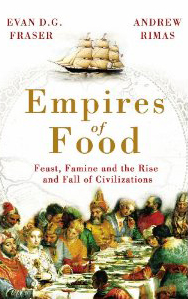 Evan D. G. Fraser and Andrew Rimas. Random House, 2010
Evan D. G. Fraser and Andrew Rimas. Random House, 2010
As if there was not enough information available on how the world is not paying attention to all the warning signs, this book was recommended to me to make me aware of the dire situation coming our way in relation to the supply of adequate food for coming generations.
This is all linked in with the issues of climate change, population growth and the way we have allowed our food supplies to be controlled by particular market and political forces. This book is a must read for all.
Many years ago there used to be lots of protest gatherings in Canberra. I am referring to both local and national protests. The local ones used to be regularly held in the place called Civic Square. The national ones were in front of the original Parliament House – now known as the Old Parliament House.
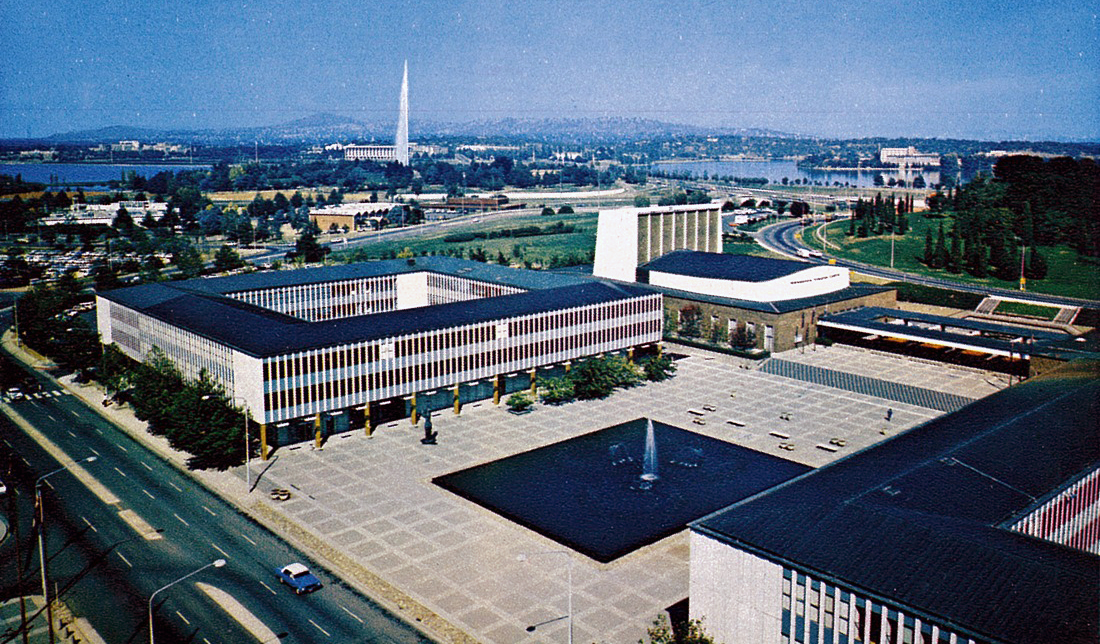 above – the original Civic Square
above – the original Civic Square
Such protests are now a rare event. Times have changed even though the political situation is much worse now than then.
This is a link to a review on the online Magazine: Metropolis.
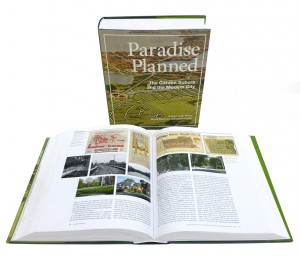 I was attracted to this as I believe in suburbia but get very annoyed (or is that angry) about the way current planning and development agencies have gone about ruining concept of suburbia through their lack of care for developing sustainable settlements.
I was attracted to this as I believe in suburbia but get very annoyed (or is that angry) about the way current planning and development agencies have gone about ruining concept of suburbia through their lack of care for developing sustainable settlements.
This new book is a comprehensive history that rescues the garden suburb from the periphery of urban design, and repositions it at the heart of the debate on cities.
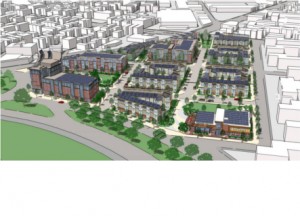 I have to admit that having done a lot of reading and been involved in many discussions on climate change and the lack of concerted actions, it was novel to read an article titled: The State of the Debate on Climate Change: Reasons for Optimism.
I have to admit that having done a lot of reading and been involved in many discussions on climate change and the lack of concerted actions, it was novel to read an article titled: The State of the Debate on Climate Change: Reasons for Optimism.
I do however share the view that any optimism for change is based not on the behaviour and actions of the national or state governments, but on the policies and actions as undertaken by some of the local governments.
 Not many cities in Australia have Lord Mayors who dare to speak out on issues. Sydney has been blessed to have a Lord Mayor who has a national and international profile. The Sydney City Council controls just a small part of the greater metropolitan area. However this has not stopped this local government from being a national leader in dealing with climate change. Within Australia, the Commonwealth and most state governments are well behind in dealing with the urgent climate issues. Leadership in this country, like many others, is coming from local government. On this Sydney is way in front thanks to Clover Moore and her team. This they have achieved despite the reactionary forces from her own state government. There’s a good piece in the Guardian from Clover – click here.
Not many cities in Australia have Lord Mayors who dare to speak out on issues. Sydney has been blessed to have a Lord Mayor who has a national and international profile. The Sydney City Council controls just a small part of the greater metropolitan area. However this has not stopped this local government from being a national leader in dealing with climate change. Within Australia, the Commonwealth and most state governments are well behind in dealing with the urgent climate issues. Leadership in this country, like many others, is coming from local government. On this Sydney is way in front thanks to Clover Moore and her team. This they have achieved despite the reactionary forces from her own state government. There’s a good piece in the Guardian from Clover – click here.
At a conference organized by the National Council on Science and the Environment (NCSE) in Washington, D.C., Diana Ürge-Vorsatz, director of the Center for Climate Change and Sustainable Energy Policy at Central European University, said “spreading today’s best building practices could hold energy costs steady,” but the big question is “how to get the public and private sectors to work together to make transformational change.”
The session then outlined some more problems limiting action on climate change, and the transformational solutions needed to solve them. Interestingly one of the problems first identified was to do with higher education. Another was the decision making processes. There were others such as water and energy wisdom. See the report on this session on The Dirt (ASLA) – click here
Referring to a posting on The Nature of Cities: Involving Children in the Design of Park Renovations to Create Green Places for Play with Urban Nature
Locally there have been several wonderful initiatives that have delivered wetlands to local neighbourhoods. These developments were very much welcomed and have become destination for people taking walks.
The new wetlands were primarily established to become catchments for run off water that had previously been channeled into 1960s concrete drains straight down through the suburbs into the lake. Water is now being partially diverted along the way to provide storage as well as being piped off site to other large water tanks for other irrigation purposes.
There are may time as a citizen, that one despairs that any government is really going to Get Real about climate change. This is more frustrating because as we all know that they have at their finger tips all the advice and scientific information necessary for intelligent and timely decisions. Yet for so many governments, it is business as usual.
According to an article just published, the State of Victorian has an agency that is prepared to offer frank advice about the crucial steps we all need to take as a nation. It has listed the top challenges for Australia. In their simplest form, they are:
While the predictions forecast an increase in temperatures and a drier climate for places such as most of Australia, especially in the South East, the same predictions forecast much wetter conditions in countries in the north, such as the UK.
While the former predictions are starting to be fulfilled, the latter for the UK is now being questioned. That is, not whether they are true, but whether climate change has already affected the weather in the UK.
With the massive flooding now underway and more expected, these questions are being asked and answered by the scientists within their bureau of meteorology.
There’s a short presentation online that introduces the benefits and urgency for all countries to do more for Cities and Biodiversity. The presenters have some key messages on their web site.
Key Messages for Cities and Biodiversity Continue reading Cities and Biodiversity
re-posted article: What are the social justice implications of urban ecology, and how can we make sure that “green cities” are not synonymous with “gentrified” or “exclusive” cities?
Here is Australia there is a lot of talk amongst city planners and such that there is a need for green cities, sustainable cities and lots more simplistic terms. It is very hard indeed to find amongst the rhetoric any realistic commitment to urban ecology.
The need to base all urban developments against a measure based around preserving and enhancing the soil, the ecology and the green infrastructure remains an optimistic wish for those interested in the survival of the planet. Current approaches to urban design and planning are still very much ‘business as usual’ with market forces, meaning the quick dollar, as the drivers and measures applied.
Re-posted from the Canberra Times
There are times here in the City of Canberra when one despairs at the actions of the planning authority in its spin about how it goes about the planning, design and redevelopment of Canberra’s suburbs. In short: It is shocking!
The authority uses all sorts of green wash in its spin. The planners within the authority still favour the so called market forces to translate their lose planning requirements to deliver what the local developers consider as adequate for residents. This means an extremely artificial nod to the urgent climate change adaptation issues that are impacting on our urban environments. Say no more.
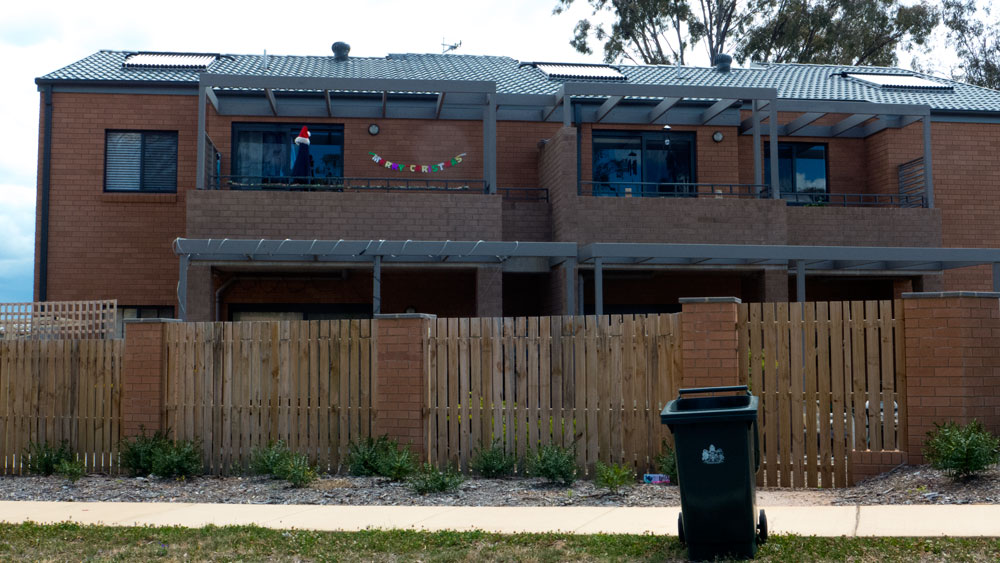 I was attending a meeting of combined community council two years ago, when to members of the public who were in attendance made very similar appeals. Both were very upset with the quality of the redevelopments that had appeared within their street, despite the local communities objections about key aspects of the developments.
I was attending a meeting of combined community council two years ago, when to members of the public who were in attendance made very similar appeals. Both were very upset with the quality of the redevelopments that had appeared within their street, despite the local communities objections about key aspects of the developments.
As far as I could ascertain, they were not necessarily opposed to the infill of their suburb. It was more about the nature of the apartments being built.
Their guest blogger reports:
By Devon Paige Willis
Devon is doing a Masters program called 4Cities, an Erasmus Mundus Masters that takes students from Brussels to Vienna, Copenhagen and Madrid to study cities. Gehl Architects met her when she was interning at the Montréal Urban Ecology Center in 2013.
When I retire I will write a book called, ‘you can’t make this sh*t up,” said Rina Cutler, deputy mayor for transportation and utilities, Philadelphia, at a National Complete Streets Coalition dinner in Washington, D.C. In a review of her experience serving seven mayors and governors, Cutler revealed the sometimes painful truths about pushing for positive change in urban transportation.
January 2014
With issues such as erosion, soil sealing, carbon capture and contaminated land of growing public concern and policy focus, this brand-new LIFE Focus publication takes a timely look at LIFE and Soil protection.
The 68 page brochure includes an overview of EU soil policy, analysis of LIFE’s contribution to its implementation and interviews that link soil science to policy-making to practical action. It also addresses in detail the impact of LIFE actions relating to all the key issues around soil sustainability, including: land take and soil sealing; soil biodiversity; carbon capture; soil monitoring; soil and water protection; sustainable agriculture; and land contamination. The publication thus provides an opportunity to highlight and assess the LIFE program’s contribution to soil protection to date, including proposals for ways in which project outcomes may be better channeled and have an even greater impact in future. Download LIFE and Soil protection
it is a good document – but warning – it is 10 MB – may take a moment to download Continue reading LIFE and Soil protection
Re-posted from The Nature of Cities
Cities and biodiversity and national parks.
It is about equating the Natural Environment of National Parks to the natural environment of Cities – there are the one environment!
Many the time I have had frustrating debates with bureaucracies over how we address the issues of biodiversity and landscape. Often it results in the otherwise intelligent bureaucrat insisting that we talk about two separate entities, the built environment and the natural environment. This perception has also surfaced in discussions with organisations such as Conservation Foundations and their like.
If cities look to stay within their boarders, there is the need to seek acceptable ways to intensify the number of residents within the older suburbs. This requires an intelligent engagement with the present residents of suburban areas on a case by case basis.
Given the need to address climate change within the suburbs as they are being redeveloped and upgraded throws up a host of requirements that should have by now have been built into legislation. Sadly this is not so as most of the re-development and intensification as been left to laissez-faire market forces.
Cities and Urban Wildlife
Take any city and ask, has the government in place a long-term strategy to enhance the biodiversity through maintaining and increasing its green infrastructure? This requires not just consideration of the public realm but also ways to encourage citizens that this needs to happen in the backyard of every home.
In the past governments have often established arboretums to undertake research on trees and shrubs. It is now far more realistic to continue the aims of arboretums not by having these specialist sites, instead the approach needs to be to increase the range of trees and shrubs within the urban areas themselves.
Making cities safe for women and girls
A woman’s right to enjoy the city
Dealing with the overlooked issue in Urban Design, Women and the City. As part of our series on eliminating violence against women and girls in our cities produced in collaboration with the Huairou Commission, Mumbai architect Pallavi Shrivastava offers a personal reflection on how the threat of violence forces women not only to change our movements but also prevents us from enjoying our cities, and thus from helping to make them the cities we want them to be. click here for the full article.